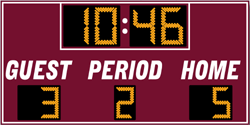Whilst soccer has been a major force across the globe since the late 1800's, it only really began to take hold in the U.S. in the 1970's. This was in a big part due to the creation of the North American Soccer League, and the relatively large fan base that the league attracted. Why this happened exactly then is difficult to pin point, but the great Pele's contibution to soccer in the U.S. cannot be underestimated. He played for the New York Cosmos in the late 70's and his presence really attracted the attention of the American public.
It wasn't smooth running though, and in the mid-80's the league folded, as it was unable to establish the momentum it needed to gain significant financial backing.
If the 70's were the first golden decade for soccer in the U.S., then the 90's were the sequel. Two things happened - MLS was formed, with wealthy and motivated backers who were determined to make a success of it, and the national team came out of decades of obscurity to suddenly become a force to reckon with. The principal reason for this second soccer boom was the successful staging of the World Cup by the U.S. in 1994. Many fans also point to the significance of the win over Trindad and Tobago in 1989, which sent the U.S. to the World Cup in 1990 for the first time in 36 years. The winning goal is now known as "The Shot Heard Round the World" as it brought the U.S. team back into the soccer spotlight. The country has not looked back since that fateful moment.
15 years later and it is fair to say that soccer's big expansion from the rest of the world into the U.S. is complete. MLS is now attracting big names. The fact that global stars such as Therry Henry and David Beckham now play in the league says something. The national team is now considered a major force in world soccer, and it features world-class players such as Landon Donovan, who plays in the English Premier league.
So will soccer in the U.S. ever reach the heights that it has in so many other countries around the world? Well, with the four big American sports dominating the landscape, despite its big successes in the last 15 years, soccer still has a long way to go to reach the popularity of these sports. It is still considered by many as a "foreign game," and there are too many draws and not enough scores for many U.S. sporting fans. Quite possibly such factors will put a ceiling on the popularity of the game, but on the other hand, with new generations opinions change wildly, and in a few decades down the line it is possible that soccer will be one of the great U.S. sports on par with basketball and football.




